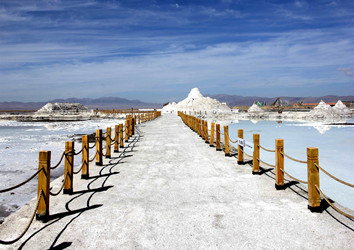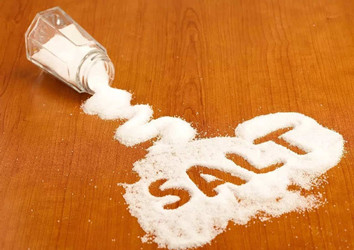我们吃的盐里居然有塑料??
导读
这应该是近期话题度很高的一个事件了。
日前,科学期刊《环境科学与技术》里有一篇研究里表示,商店里卖的大部分包装盐,都含有塑料微粒。

这个研究团队的人来自韩国的仁川国立大学以及绿色和平组织的东亚分部,他们检测了21个国家和地区中39个品牌的食盐。其中只有3个样品没检测出塑料微粒。
Microplastics are virtually everywhere. Sea salt and lake salt are made by evaporating water and harvesting the salt that remains. Plastic waste flows from rivers into those bodies of water, so it’s no surprise that the salt contains traces of it too.
事实上塑料微粒到处都是。海盐和湖盐的制作方式都是先蒸发掉水,然后把剩下的盐收起来。而塑料废物经由河道流进了这些水体,所以你能在食盐中查出塑料来就一点也不奇怪。
同时,他们发现亚洲产的盐里塑料最多。
The 39 samples came from Australia, Belarus, Brazil, Bulgaria, Mainland China, Croatia, France, Germany, Hungary, India, Indonesia, Italy, Korea, Pakistan, Philippines, Senegal, Taiwan, Thailand, the UK, the US, and Vietnam.
这39种样品分别来自澳大利亚、白俄罗斯、巴西、保加利亚、中国大陆、克罗蒂亚、法国、德国、匈牙利、印度、印度尼西亚、意大利、韩国、巴基斯坦、菲律宾、塞内加尔、中国台湾、泰国、英国、美国和越南。
Of these, 28 were sea salts, nine were rock salts, and two were lake salts.
这其中,28款是海盐,9款是岩盐,2款是湖盐。

Only three of the samples were microplastics-free: a refined sea salt from Taiwan, a refined rock salt from Mainland China, and an unrefined sea salt in France.
只有3个样品是不含塑料微粒的:一款来自台湾的精制海盐、一款来自大陆的精制岩盐、一款来自法国的未精制海盐。
The results indicate that not only is Asia a hot spot of global plastic pollution, as previous studies have suggested, but also that sea salt can be a good indicator of the magnitude of [microplastics] pollution in the surrounding marine environment,” the researchers write.
研究人员写到:“这个结果不光和以前的研究一样表明亚洲是全球塑料污染里的一个热点,它还说明海盐的质量可以很好地说明附近海洋生态被塑料污染的程度。”

根据这项研究的估算,平均一个成年人每年会通过食盐摄入约2000片塑料微粒。但研究人员指出,这只体现了人们摄入的所有塑料的一小部分。如果把其他的塑料微粒来源也算进来,食盐里的塑料只占一个人摄入的总塑料的6%。
感觉这年头,吃啥都不安全。。你对这个事件有什么看法呢?


